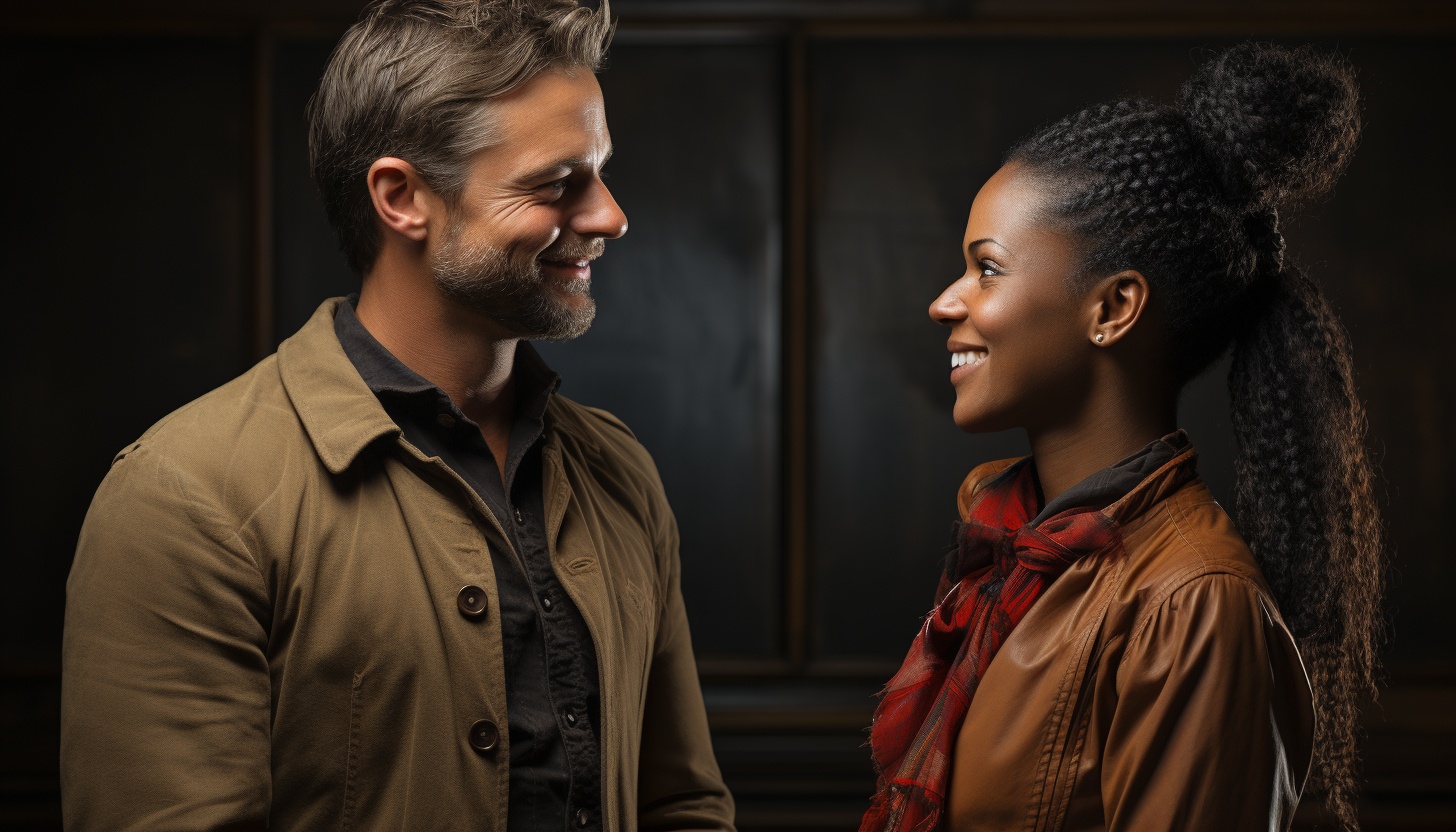
Decoding Body Language: Understanding Hidden Signals
Do you ever wonder what people are really saying with their body language? It’s like a secret code, revealing hidden signals that can tell you so much more than words alone.
In this article, we will delve into the fascinating world of decoding body language. By understanding subtle cues, such as facial expressions, gestures, and posture, you will gain a deeper understanding of the emotions and intentions behind the words.
Get ready to unlock the secrets of nonverbal communication and become a master interpreter of body language.
The Importance of Body Language

Understanding body language is essential for effective communication. It goes beyond spoken words and allows you to decipher the hidden signals being transmitted by others. When engaging in a conversation, it’s crucial to pay attention to the nonverbal cues that people display. These cues can provide valuable insights into their thoughts, emotions, and intentions. By being observant and analytical, you can gain a deeper understanding of the message being conveyed, enabling you to respond appropriately.
Body language encompasses a wide range of signals, including facial expressions, gestures, posture, and eye contact. For example, a furrowed brow may indicate confusion or concern, while crossed arms might suggest defensiveness or discomfort. These cues are often subconscious, revealing the true emotions behind someone’s words. By being attuned to these signals, you can avoid misunderstandings and establish a stronger connection with others.
In addition, body language can also help you gauge the level of engagement and interest of the person you’re communicating with. For instance, leaning forward and maintaining eye contact indicates attentiveness, while fidgeting or avoiding eye contact may signify disinterest or distraction.
Common Nonverbal Cues to Look For

To effectively decode body language, start by looking for common nonverbal cues that can provide valuable insights into a person’s thoughts, emotions, and intentions. Paying attention to these cues can help you better understand the underlying messages being communicated. Here are some common nonverbal cues to look for:
– Body posture: Observe how someone stands or sits. A slouched posture may indicate boredom or disinterest, while an upright posture can convey confidence and attentiveness.
– Eye contact: The amount and duration of eye contact can reveal a lot about a person’s level of engagement. Avoiding eye contact may indicate shyness or discomfort, while prolonged eye contact can suggest interest or attraction.
– Gestures: Pay attention to gestures such as hand movements, facial expressions, and body language. These can provide additional context and enhance the meaning of verbal communication.
– Facial expressions: The face is a powerful tool for expressing emotions. Observe facial expressions for signs of happiness, sadness, anger, or surprise.
By being aware of these common nonverbal cues, you can gain a deeper understanding of others and improve your ability to interpret their body language.
Understanding facial expressions, which will be discussed in the next section, is another important aspect of decoding nonverbal communication.
Understanding Facial Expressions

Now that you have identified common nonverbal cues, how can you further analyze and interpret the hidden messages behind facial expressions? Facial expressions are one of the most powerful forms of nonverbal communication, as they can convey a wide range of emotions and thoughts. Understanding these expressions can provide valuable insights into a person’s true feelings and intentions. By closely observing facial cues, you can gain a deeper understanding of the unspoken messages being conveyed. Here is a table that outlines some common facial expressions and their possible meanings:
| Facial Expression | Possible Meaning |
|---|---|
| Raised eyebrows | Surprise or disbelief |
| Furrowed brow | Confusion or concern |
| Smiling eyes | Genuine happiness or amusement |
| Tightened lips | Disapproval or disagreement |
| Jaw clenched | Anger or frustration |
Analyzing facial expressions involves paying attention to both individual features and the overall expression. Notice subtle changes in eyebrow position, eye movement, mouth shape, and jaw tension. These micro-expressions can provide valuable insights into a person’s true emotional state. It is important to consider context and other nonverbal cues in conjunction with facial expressions to accurately interpret their meaning. Remember, while facial expressions can be revealing, they are not foolproof indicators of one’s true thoughts and feelings.
Decoding Gestures and Posture

To further analyze and interpret the hidden messages behind facial expressions, it’s important to decode gestures and posture. Just like facial expressions, gestures and posture can reveal a person’s true thoughts and emotions. Here are some key points to consider when decoding these nonverbal cues:
– Hand gestures: Pay attention to how someone uses their hands while speaking. Are they open and expressive, or are they clenched and guarded? Hand movements can indicate confidence, enthusiasm, or even nervousness.
– Body posture: The way someone carries themselves can speak volumes about their state of mind. Notice if they stand tall and upright, indicating confidence, or if they slump their shoulders, suggesting insecurity or fatigue.
– Eye contact: The eyes are often referred to as the ‘windows to the soul,’ and for good reason. Maintaining eye contact shows attentiveness and interest, while avoiding eye contact may signal dishonesty or discomfort.
– Personal space: People have different comfort levels when it comes to personal space. Pay attention to how close someone stands or sits to you, as it can indicate their level of familiarity or intimacy.
Reading Emotions Through Body Language

When analyzing body language, you can read a person’s emotions through their nonverbal cues. Emotions are a fundamental aspect of human communication, and they often manifest through our physical expressions. By paying close attention to subtle cues such as facial expressions, body posture, and gestures, you can gain valuable insights into a person’s emotional state.
Facial expressions play a crucial role in conveying emotions. For example, a genuine smile with raised cheeks and eye crinkles indicates happiness, while a furrowed brow and narrowed eyes suggest anger or frustration. Similarly, the position of a person’s body can reveal their emotional state. Slumped shoulders and a drooping head may indicate sadness or defeat, while an upright posture with a lifted chin often signifies confidence or pride.
Gestures also provide valuable information about a person’s emotions. Fidgeting or restless movements may indicate nervousness or anxiety, while clenched fists might signal anger or frustration. Additionally, the intensity of these gestures can further reveal the strength of the emotion being experienced.
It is important to note that body language cues should be interpreted in context, as cultural and individual differences can influence their meaning. However, by observing and analyzing these nonverbal signals, you can gain a deeper understanding of a person’s emotional state, allowing for improved communication and connection.
Conclusion
As you observe the subtle movements and expressions of those around you, a world of hidden signals begins to unfold. The importance of body language can’t be overstated, as it reveals emotions, intentions, and unspoken truths.
By understanding facial expressions, gestures, and posture, you can delve into the depths of human interaction. So pay attention, for beneath the surface lies a wealth of information waiting to be decoded.






